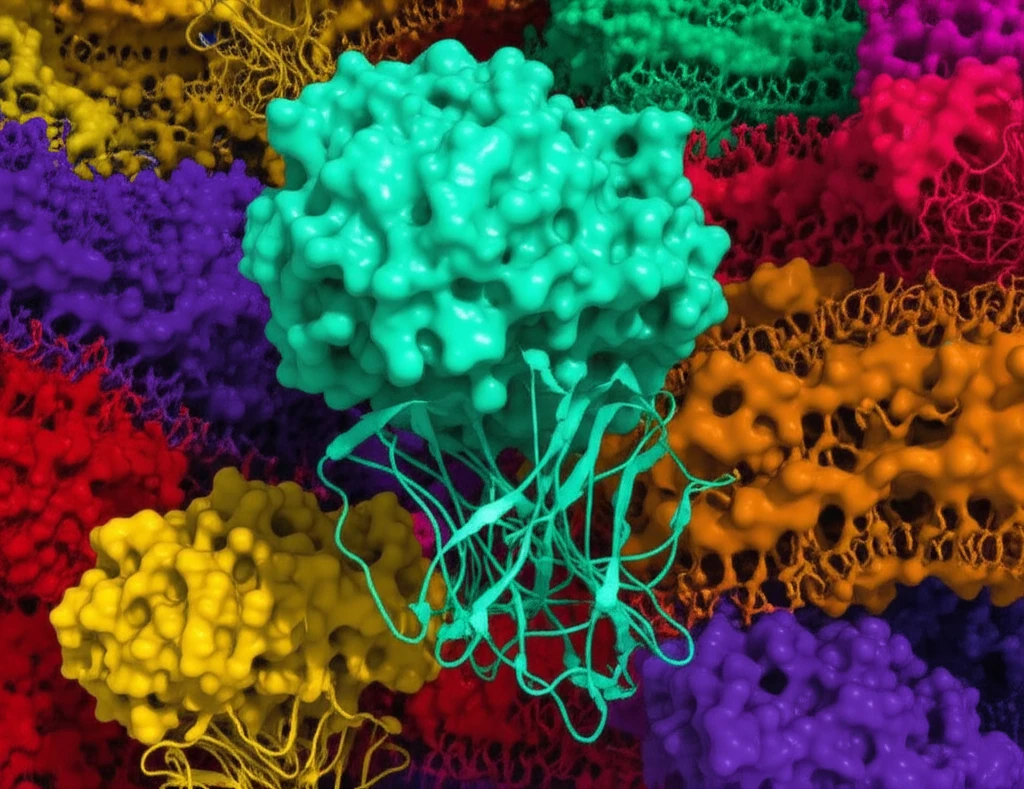
Unlock Cell Secrets: How Lipids Impact Protein Function
"A New Study Reveals How Changes in Cellular Fat Can Alter Protein Behavior, Impacting Everything From Brain Function to Hormone Release."
The human body is a complex machine, with trillions of cells working in harmony. Within these cells, proteins are the workhorses, carrying out countless tasks essential for life. But what controls these proteins? A new study reveals an unexpected influence: lipids, the fats within our cells. These lipids are not just structural components; they actively shape how proteins function.
Researchers have focused on VAMP2, a protein crucial for neurotransmitter and hormone release. VAMP2 helps vesicles (tiny sacs containing chemicals) fuse with the cell membrane, allowing the release of their contents. This process is fundamental to how our brains communicate and how our bodies regulate various functions.
The study uncovers that the environment surrounding VAMP2, specifically the types of lipids present, dramatically alters its structure and behavior. This discovery has broad implications, suggesting that changes in lipid composition can disrupt protein function and potentially contribute to disease.
Lipids Pull the Strings: How Cell Fats Control Protein Behavior

The researchers synthesized VAMP2's transmembrane domain (the part that sits within the cell membrane) and exposed it to different lipid environments. They used a technique called ATR-FTIR spectroscopy to analyze how the protein's structure changed in response to these varying conditions.
- Lipid Composition Matters: VAMP2's structure, specifically the balance between alpha-helices and beta-sheets (two common protein shapes), shifts depending on the surrounding lipids.
- Charged Lipids Have a Big Impact: Adding even a small amount of negatively charged lipids dramatically alters VAMP2's structure.
- Cholesterol Plays a Stabilizing Role: Cholesterol, a major component of cell membranes, reduces the structural variation in VAMP2, maintaining it in a relatively stable state.
- Mutations Affect Lipid Interaction: Altering key amino acids within VAMP2 affects how it interacts with lipids, further underscoring the protein's sensitivity to its environment.
New Avenues for Understanding and Treating Disease
This research opens new avenues for understanding diseases linked to dysfunctional protein activity. Many neurological disorders, hormonal imbalances, and metabolic diseases involve disruptions in cell membrane composition.
By understanding how lipids influence key proteins like VAMP2, scientists can potentially develop therapies that target lipid metabolism to restore proper protein function. This could lead to new treatments for a wide range of conditions.
Further research is needed to fully elucidate the complex interplay between lipids and proteins. However, this study provides a crucial step forward, highlighting the dynamic and influential role of lipids in cellular processes.
